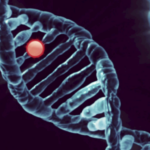Epigenome: Beyond the Genome
The epigenome is a term that carries immense significance in genetics and biology. It represents a complex and dynamic layer of regulatory mechanisms that govern gene expression without altering the underlying genetic code. In this blog post, we will explore the fascinating world of the epigenome, its role in human health, and the advanced techniques used to study and manipulate it.
What is the Epigenome?
The epigenome refers to a collection of chemical modifications that occur within our DNA, influencing gene activity without changing the DNA sequence itself. These modifications include DNA methylation, histone modifications, and non-coding RNAs, all of which act as regulatory mechanisms that turn genes on or off in response to various internal and external factors.
Unlike the relatively stable genome, the epigenome is highly dynamic and susceptible to environmental influences. It plays a pivotal role in numerous biological processes, including development, cellular differentiation, and responses to environmental cues.
Epigenetic Modifications: The Keys to Gene Expression
DNA Methylation involves the addition of a methyl group to the DNA molecule, typically at cytosine residues in a CpG dinucleotide context. This modification can silence nearby genes by blocking the binding of transcription factors and other regulatory proteins. DNA methylation patterns are established early in development and are maintained throughout life, but they can be dynamically modified in response to environmental stimuli.
Histone Modifications are changes to the proteins around which DNA is wrapped, forming a structure called chromatin. Modifications like acetylation, methylation, and phosphorylation alter chromatin’s compactness, making DNA more or less accessible to transcriptional machinery. These changes act as molecular switches that regulate gene activity, influenced by various cellular signals and environmental factors.
Non-coding RNAs are RNA molecules that do not code for proteins but play crucial roles in gene regulation. MicroRNAs and long non-coding RNAs are examples that participate in epigenetic processes. MicroRNAs can bind to messenger RNAs (mRNAs), preventing their translation into proteins, while long non-coding RNAs interact with chromatin, guiding proteins that modify gene expression.
Epigenome vs. Genome: The Dynamic Interaction
The epigenome interacts with the genome to regulate gene expression in response to various internal and external signals. While the genome provides the blueprint for life, the epigenome acts as a dynamic interpreter, regulating gene expression without altering the DNA sequence.
This interaction is crucial for the proper functioning of cells and organisms. The epigenome influences gene expression by modifying the accessibility of genes within the genome. For example, epigenetic marks can alter chromatin structure, making certain genes more or less accessible for transcription.
Understanding the distinction between the epigenome and genome is essential for comprehending gene regulation’s complexity. While the genome remains relatively stable throughout life, the epigenome is highly responsive to changes, making it a promising avenue for understanding diseases and developing personalized therapies.
Epigenome and Human Health
The epigenome plays a crucial role in human health, influencing various biological processes and contributing to disease development. Understanding the relationship between the epigenome and disease is vital for advancing medicine and developing personalized therapies.
Epigenetics and Cancer
Cancer is characterized by uncontrolled cell growth and the ability to invade surrounding tissues. Epigenetic alterations, such as aberrant DNA methylation and histone modifications, can contribute to cancer by silencing tumor suppressor genes or activating oncogenes.
Epigenetics and Neurological Disorders
Neurological disorders like Alzheimer’s and Parkinson’s involve complex interactions between genetic and environmental factors. Epigenetic dysregulation, including changes in DNA methylation and histone modifications, has been implicated in these conditions, providing insights into their underlying mechanisms.
Epigenetics and Aging
Aging involves a gradual decline in physiological functions and increased susceptibility to diseases. The epigenome plays a critical role in aging, with epigenetic changes accumulating over time and influencing gene expression patterns that contribute to aging and age-related diseases.
Epigenetic Inheritance
Emerging evidence suggests that epigenetic marks can be passed from one generation to the next, influencing the health and traits of offspring. This transgenerational epigenetic inheritance suggests that the experiences and exposures of previous generations can affect future generations’ health and well-being.
Techniques and Tools for Studying the Epigenome
Advancements in technology have provided sophisticated techniques and tools to study the epigenome, enabling scientists to decipher the complex patterns of epigenetic modifications.
Epigenome Mapping Techniques
Epigenome mapping techniques identify and characterize various epigenetic modifications across different cell types, tissues, and developmental stages. These include DNA methylation profiling, chromatin immunoprecipitation (ChIP), and next-generation sequencing technologies.
Bioinformatics Analysis of Epigenomic Data
Bioinformatics plays a crucial role in analyzing epigenomic data, integrating it with other genomic and transcriptomic datasets to provide a comprehensive understanding of gene regulation.
Epigenome Editing Technologies
Epigenome editing technologies, like CRISPR-Cas9-based editing, allow precise modification of epigenetic marks at specific genomic locations, providing insights into the causal relationships between epigenetic modifications and gene function.
Current Research and Future Perspectives
The study of the epigenome is rapidly evolving, with new research and technological advancements shaping our understanding of epigenetic regulation. Epigenome-wide association studies (EWAS), epigenomics in personalized medicine, and the role of epigenetics in environmental health and agriculture are some of the current research trends.
Key Takeaways
- The epigenome influences gene expression through chemical modifications like DNA methylation, histone modifications, and non-coding RNAs.
- Epigenetic changes are associated with various diseases, including cancer and neurological disorders.
- Techniques such as epigenome mapping, bioinformatics analysis, and epigenome editing have revolutionized epigenetics.
- Emerging technologies like single-cell epigenomics and epitranscriptomics hold promise for future research.
With continued advancements in technology and research, the study of the epigenome will undoubtedly uncover new insights, leading to transformative approaches to improving human health, enhancing agricultural practices, and deepening our understanding of the intricate relationship between genes, the environment, and disease.





